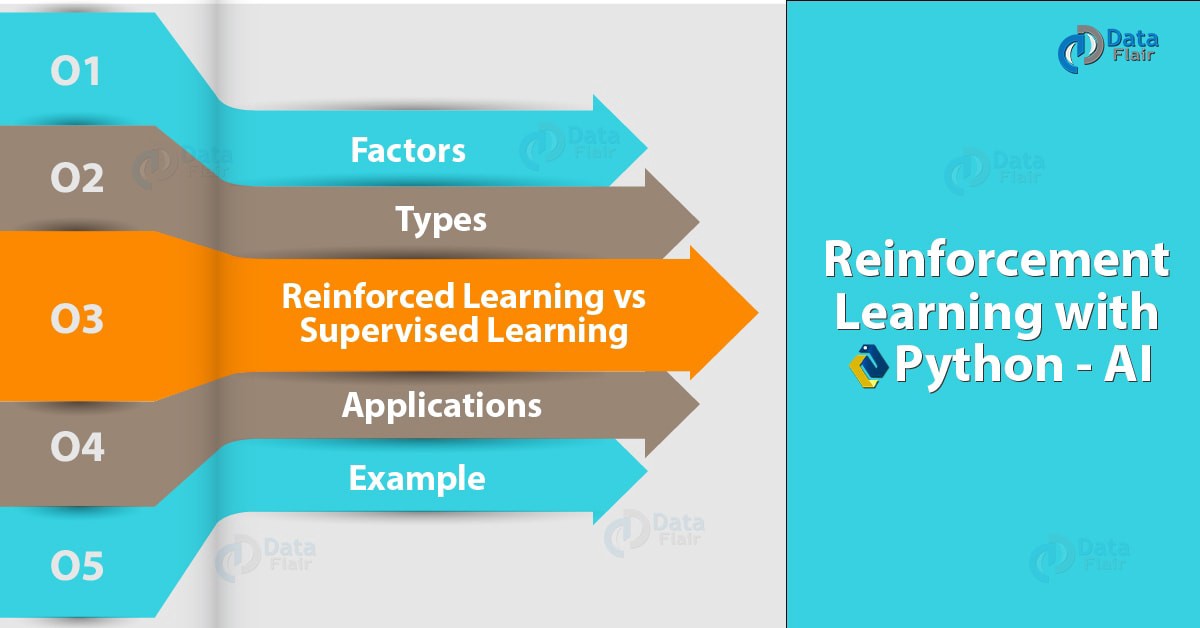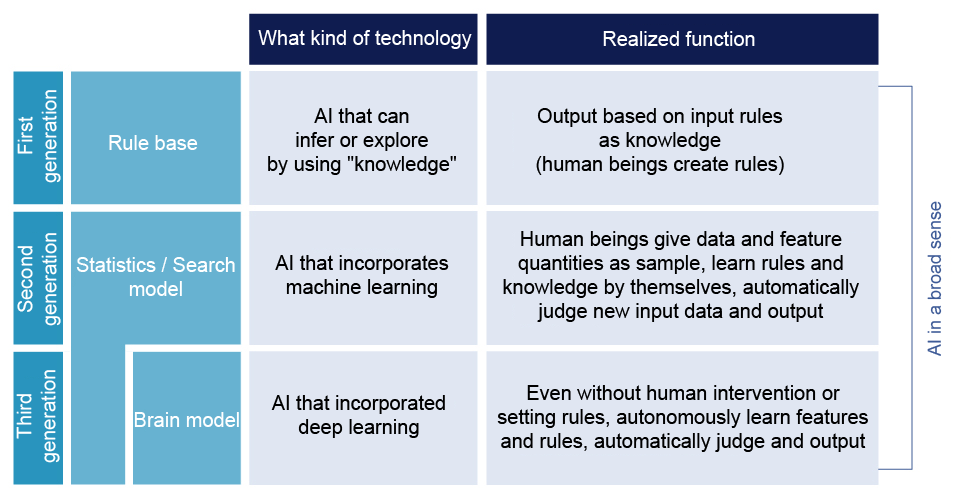
Machine learning is part of deep learning. This artificial intelligence technique makes use of large data sets. Machine learning can be made possible by big data. This refers to the large number of users and metadata. This is inspired by the human brain and requires high-end computers to make it work. Deep learning relies on supervised learning but is not possible without high-end computers. Both are very useful.
Machine learning is a subset deep learning
Machine learning allows artificial intelligence systems to learn through experience. Neural networks are the underlying algorithms that use data to determine what factors are most important for a given task. This structure is similar to the human brain, so deep learning is often referred to as "deep learning."

It was inspired by the human brain
The brain is a fascinating topic for researchers in machine learning. Researchers at Purdue University are developing hardware inspired by the human brain to teach AI continuously over time. This technology could allow AI to operate in isolated settings. It can also embed into hardware to increase its efficiency. The project aims to improve machine learning by making it more portable. It is an innovative way for AI to be more flexible. It could even replace human beings in the future.
This requires high-end equipment
While processing power is an important factor in deep learning applications, there's more to it than that. There are also a few other key factors to take into consideration when selecting a machine. RAM is crucial as it can slow down the performance of GPU code. Your GPU must be able to execute code without needing to swap to the disk. Ensure your machine has enough RAM to comfortably work with GPU code, and go with a size that matches the largest GPU. For example, the Titan RTX needs 24 GB of RAM. It is not necessary to have more RAM. However, it can help.
It uses supervised Learning
The most basic form of machine learning, supervised learning involves mapping an input value to a desired output. The algorithm uses a training set containing examples of known inputs and outputs to create a model that can assign class labels to unseen instances. The inputs, outputs and class labels can be modeled by the algorithm to help minimize the cost function. The algorithm can then be used in a variety applications such as speech recognition and credit score scoring.

It can solve complex AI challenges
Machine learning has made AI a reality. Machine learning is used to detect malware in data security companies, and finance professionals want an assistant that alerts them to profitable trades. AI algorithms can learn and improve over time to simulate a virtual assistant. Deep learning algorithms (a more advanced form of machine learning) organize algorithms in layers to learn new and improve. Deep learning algorithms are more efficient than their simpler counterparts at making decisions and performing complex tasks.
FAQ
Which countries are leading the AI market today and why?
China is the world's largest Artificial Intelligence market, with over $2 billion in revenue in 2018. China's AI industry is led in part by Baidu, Tencent Holdings Ltd. and Tencent Holdings Ltd. as well as Huawei Technologies Co. Ltd. and Xiaomi Technology Inc.
China's government is heavily involved in the development and deployment of AI. The Chinese government has created several research centers devoted to improving AI capabilities. These include the National Laboratory of Pattern Recognition, the State Key Lab of Virtual Reality Technology and Systems, and the State Key Laboratory of Software Development Environment.
China is home to many of the biggest companies around the globe, such as Baidu, Tencent, Tencent, Baidu, and Xiaomi. All of these companies are currently working to develop their own AI solutions.
India is another country that has made significant progress in developing AI and related technology. India's government is currently focusing its efforts on developing a robust AI ecosystem.
How will AI affect your job?
AI will replace certain jobs. This includes drivers, taxi drivers as well as cashiers and workers in fast food restaurants.
AI will create new jobs. This includes business analysts, project managers as well product designers and marketing specialists.
AI will make it easier to do current jobs. This includes doctors, lawyers, accountants, teachers, nurses and engineers.
AI will make it easier to do the same job. This applies to salespeople, customer service representatives, call center agents, and other jobs.
What is AI and why is it important?
It is estimated that within 30 years, we will have trillions of devices connected to the internet. These devices will include everything from fridges and cars. Internet of Things (IoT), which is the result of the interaction of billions of devices and internet, is what it all looks like. IoT devices will communicate with each other and share information. They will also be capable of making their own decisions. Based on past consumption patterns, a fridge could decide whether to order milk.
It is expected that there will be 50 Billion IoT devices by 2025. This is a huge opportunity to businesses. But, there are many privacy and security concerns.
Which industries are using AI most?
The automotive industry is among the first adopters of AI. BMW AG uses AI for diagnosing car problems, Ford Motor Company uses AI for self-driving vehicles, and General Motors uses AI in order to power its autonomous vehicle fleet.
Other AI industries include banking and insurance, healthcare, retail, telecommunications and transportation, as well as utilities.
What are the benefits to AI?
Artificial Intelligence, a rapidly developing technology, could transform the way we live our lives. Artificial Intelligence has revolutionized healthcare and finance. And it's predicted to have profound effects on everything from education to government services by 2025.
AI is already being used to solve problems in areas such as medicine, transportation, energy, security, and manufacturing. There are many applications that AI can be used to solve problems in medicine, transportation, energy, security and manufacturing.
What is it that makes it so unique? First, it learns. Computers learn independently of humans. Instead of learning, computers simply look at the world and then use those skills to solve problems.
AI stands out from traditional software because it can learn quickly. Computers can read millions of pages of text every second. They can quickly translate languages and recognize faces.
It can also complete tasks faster than humans because it doesn't require human intervention. It can even perform better than us in some situations.
A chatbot called Eugene Goostman was developed by researchers in 2017. Numerous people were fooled by the bot into believing that it was Vladimir Putin.
This is proof that AI can be very persuasive. Another benefit of AI is its ability to adapt. It can be trained to perform new tasks easily and efficiently.
This means that companies do not have to spend a lot of money on IT infrastructure or employ large numbers of people.
How does AI impact work?
It will transform the way that we work. We will be able automate repetitive jobs, allowing employees to focus on higher-value tasks.
It will increase customer service and help businesses offer better products and services.
It will help us predict future trends and potential opportunities.
It will give organizations a competitive edge over their competition.
Companies that fail AI will suffer.
Why is AI used?
Artificial intelligence refers to computer science which deals with the simulation intelligent behavior for practical purposes such as robotics, natural-language processing, game play, and so forth.
AI can also be called machine learning. This refers to the study of machines learning without having to program them.
AI is often used for the following reasons:
-
To make our lives easier.
-
To be better than ourselves at doing things.
Self-driving cars is a good example. AI can take the place of a driver.
Statistics
- By using BrainBox AI, commercial buildings can reduce total energy costs by 25% and improves occupant comfort by 60%. (analyticsinsight.net)
- More than 70 percent of users claim they book trips on their phones, review travel tips, and research local landmarks and restaurants. (builtin.com)
- That's as many of us that have been in that AI space would say, it's about 70 or 80 percent of the work. (finra.org)
- While all of it is still what seems like a far way off, the future of this technology presents a Catch-22, able to solve the world's problems and likely to power all the A.I. systems on earth, but also incredibly dangerous in the wrong hands. (forbes.com)
- In 2019, AI adoption among large companies increased by 47% compared to 2018, according to the latest Artificial IntelligenceIndex report. (marsner.com)
External Links
How To
How to build a simple AI program
To build a simple AI program, you'll need to know how to code. There are many programming languages out there, but Python is the most popular. You can also find free online resources such as YouTube videos or courses.
Here's how to setup a basic project called Hello World.
First, open a new document. This can be done using Ctrl+N (Windows) or Command+N (Macs).
Type hello world in the box. Press Enter to save the file.
Now, press F5 to run the program.
The program should say "Hello World!"
This is only the beginning. You can learn more about making advanced programs by following these tutorials.